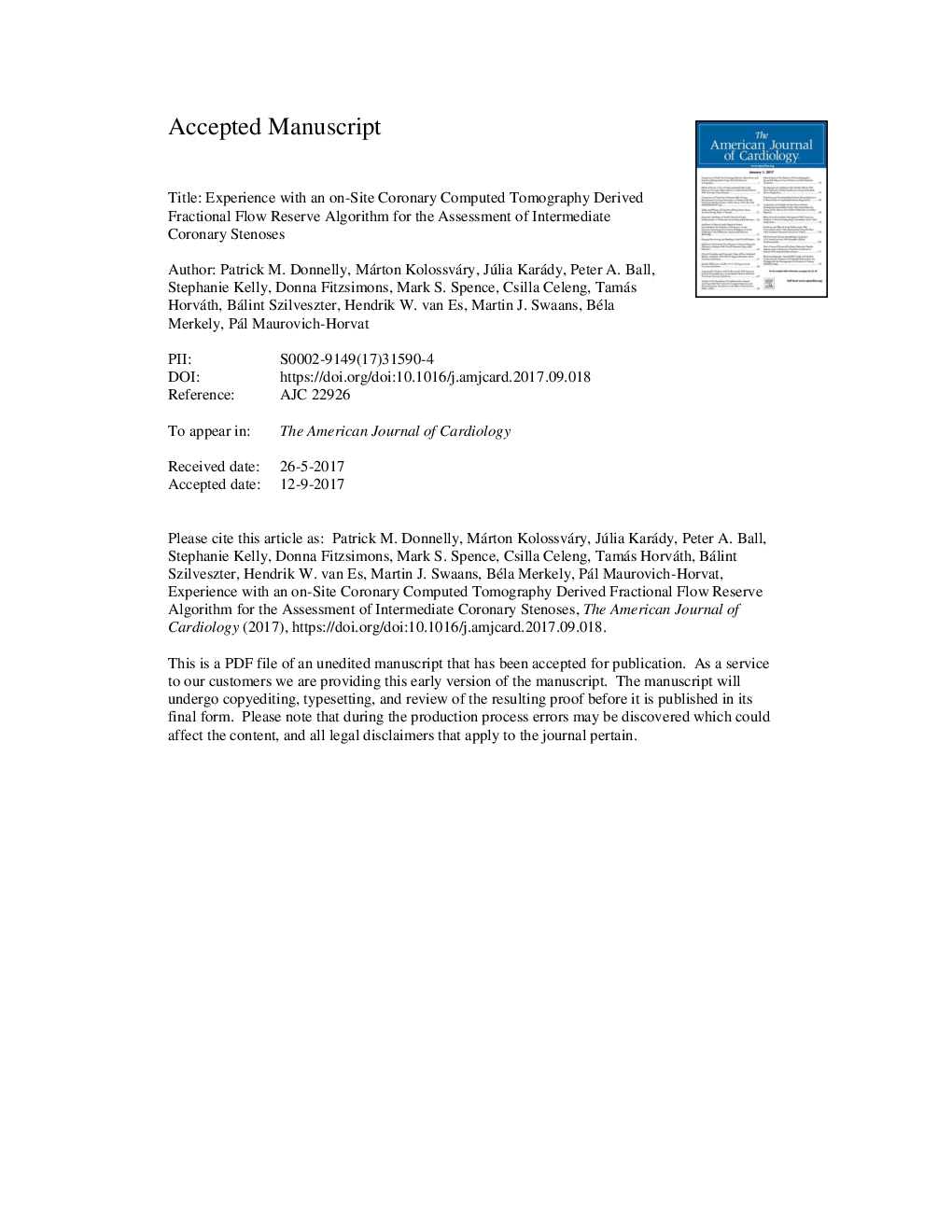| کد مقاله | کد نشریه | سال انتشار | مقاله انگلیسی | نسخه تمام متن |
|---|---|---|---|---|
| 8651584 | 1572070 | 2018 | 21 صفحه PDF | دانلود رایگان |
عنوان انگلیسی مقاله ISI
Experience With an On-Site Coronary Computed Tomography-Derived Fractional Flow Reserve Algorithm for the Assessment of Intermediate Coronary Stenoses
ترجمه فارسی عنوان
تجربه با یک الگوریتم رزرو تخلیه جرمی تونوگرافی فورچون بر روی سایت برای ارزیابی استنوزهای کرونر متوسط
دانلود مقاله + سفارش ترجمه
دانلود مقاله ISI انگلیسی
رایگان برای ایرانیان
موضوعات مرتبط
علوم پزشکی و سلامت
پزشکی و دندانپزشکی
کاردیولوژی و پزشکی قلب و عروق
چکیده انگلیسی
Fractional flow reserve (FFR) derived from coronary computed tomography angiography (CTA) is a new technique for the diagnosis of ischemic coronary artery stenoses. The aim of this prospective study was to evaluate the diagnostic performance of a novel on-site computed tomography-based fractional flow reserve algorithm (CT-FFR) compared with invasive FFR as the gold standard, and to determine whether its diagnostic performance is affected by interobserver variations in lumen segmentation. We enrolled 44 consecutive patients (64.6â±â8.9 years, 34% female) with 60 coronary atherosclerotic lesions who underwent coronary CTA and invasive coronary angiography in 2 centers. An FFR value â¤0.8 was considered significant. Coronary CTA scans were evaluated by 2 expert readers, who manually adjusted the semiautomated coronary lumen segmentations for effective diameter stenosis (EDS) assessment and on-site CT-FFR simulation. The mean CT-FFR value was 0.77â±â0.15, whereas the mean EDS was 43.6â±â16.9%. The sensitivity, specificity, positive predictive value, and negative predictive value of CT-FFR versus EDS with a cutoff of 50% were the following: 91%, 72%, 63%, and 93% versus 52%, 87%, 69%, and 77%, respectively. The on-site CT-FFR demonstrated significantly better diagnostic performance compared with EDS (area under the curve 0.89 vs 0.74, respectively, pâ<0.001). The CT-FFR areas under the curve of the 2 readers did not show any significant difference (0.89 vs 0.88, pâ=â0.74). In conclusion, on-site CT-FFR simulation is feasible and has better diagnostic performance than anatomic stenosis assessment. Furthermore, the diagnostic performance of the on-site CT-FFR simulation algorithm does not depend on the readers' semiautomated lumen segmentation adjustments.
ناشر
Database: Elsevier - ScienceDirect (ساینس دایرکت)
Journal: The American Journal of Cardiology - Volume 121, Issue 1, 1 January 2018, Pages 9-13
Journal: The American Journal of Cardiology - Volume 121, Issue 1, 1 January 2018, Pages 9-13
نویسندگان
Patrick M. MD, Márton MD, Júlia MD, Peter A. MD, Stephanie MSc, Donna MD, PhD, Mark S. MD, Csilla MD, PhD, Tamás MD, PhD, Bálint MD, PhD, Hendrik W. MD, Martin J. MD, Béla MD, PhD, DSc, Pál MD, PhD, MPH,
